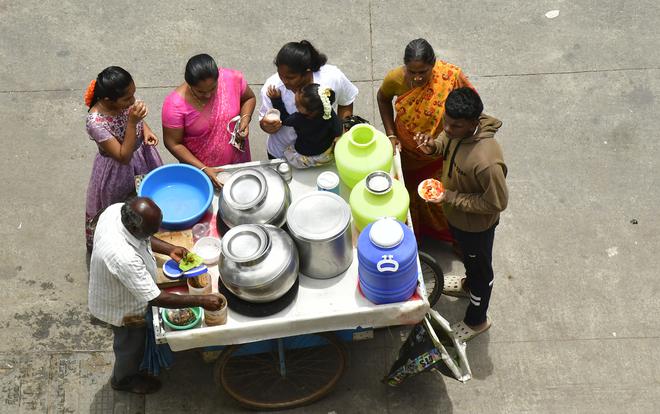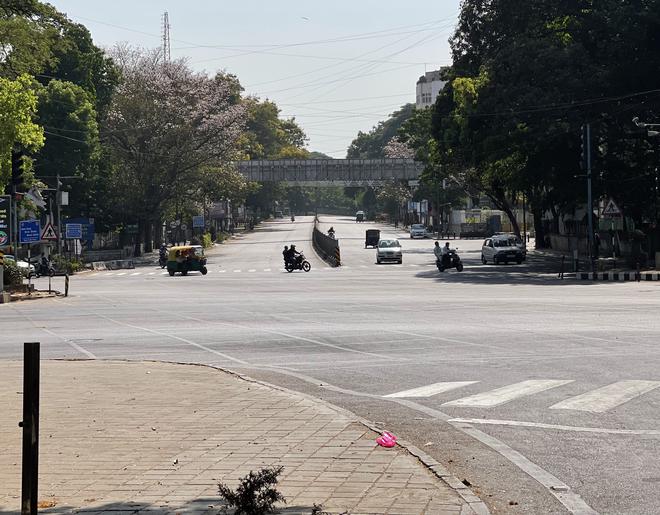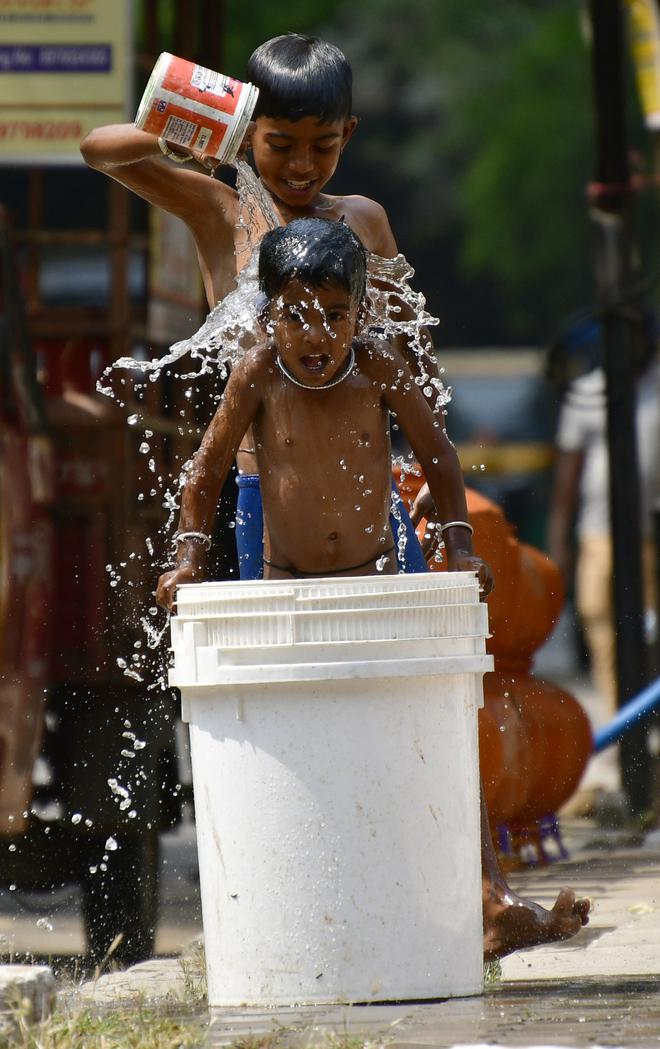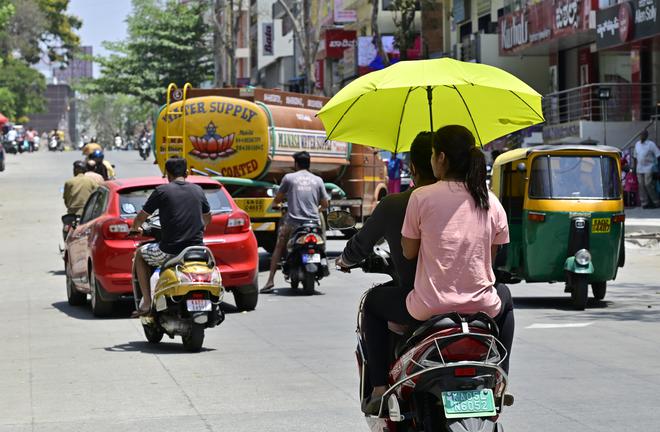The festival of Ugadi (New Year as per the Hindu calendar) passed off this year without the customary ‘Ugadi male’ (rains) in Bengaluru. The temperature hovered around 35 degrees Celsius on the festival day on Tuesday, the only solace being that it was a few degrees lower than in the preceding days. Once known by the sobriquet of an ‘air-conditioned city’, Bengaluru saw temperature crossing 38 degrees Celsius this April. It has been a double whammy for Bengalureans this summer considering the serious water crisis in the city.
No sign of rain
Though the India Meteorological Department (IMD) had forecast that many parts of Karnataka, including Bengaluru, would witness above-normal maximum temperatures during the summer months of March, April, and May, the weather forecaster had also predicted a high probability of above-normal rainfall in March over a few districts of south-interior Karnataka, which includes Bengaluru.
In line with the IMD’s forecast, Bengaluru recorded above-normal temperature during March (the normal temperature being 33.4°C) but the city did not receive any rainfall during this period.

On March 29, the IMD’s Bengaluru city station recorded a maximum of 36.4°C, which is the highest March temperature in the last five years for the city. A few days later, on April 5, the Kempegowda International Airport’s (KIA) weather station recorded a maximum of 38.3°C. The very next day, the Bengaluru city station recorded 37.6°C, which turned out to be the third-highest maximum temperature in the last 15 years for April, and the highest in the last eight years for Bengaluru. The highest-ever temperature recorded for April though was 39.2°C in 2016.
This has been particularly bad for those compelled to work in the sun, like construction workers, delivery executives, pourakarmikas (civic workers), and auto and taxi drivers. It has been so bad that that pourakarmika unions have demanded that their working hours be rescheduled for the summer months. While they are expected to work between 6.30 a.m. and 2.30 p.m., they have demanded half-day work and breaks in between. They have also asked ror eye shades, caps or hats, umbrellas, and other equipment to protect themselves from the heat, in a memorandum submitted to the Urban Development Department and the Department of Municipal Administration. Street vendors have demanded a special allowance for the summer months because their business is down.

Why so bad?
So, what has led to the soaring temperatures and rain eluding the city this summer? Meteorologists attribute it to El Nino conditions. El Nino refers to a band of warmer water spreading from west to east in the equatorial Pacific Ocean. It has had an impact not just on the rising temperatures during the summer months, but also during the last winter season.

“We did not witness an intense winter (December, January, and February) also because of El Nino. Then there is an anti-cyclonic circulation over the Bay of Bengal and the Arabian Sea. So we can expect high temperatures. The classical thunderstorm activity has not started in April, so we have not received any rainfall so far,” said A. Prasad, scientist, IMD, Bengaluru.
The last rains
The last time Bengaluru received rainfall was in 2023, and the city has not had any rainfall in over three months. Meteorologists say that January and February are usually considered dry months, and no showers are expected then. However in March, the city usually receives a few spells of rain.

“Traditionally, during January and February, Bengaluru does not receive rainfall. The normal rainfall for January is only 1.6 mm and for February it is 7.1 mm. But for March, it (normal) is 14.7 mm and in April, Bengaluru receives 61.7 mm. We did not receive any rainfall during March, and even if we do receive rainfall in April, it will be below normal,” said Prasad.
The IMD, which on April 1 released the ‘Updated Seasonal outlook for hot weather season (April to June) 2024’ and ‘Monthly Outlook for April 2024 for the Rainfall and Temperature,’ has already forecast that from April to June, above-normal heatwave days are likely to occur over most parts of the southern peninsula. Further, it stated that during April, above-normal heatwave days are likely over many parts of the southern peninsula.

“In April, south-interior Karnataka is likely to see below-normal rainfall, and parts of north-interior Karnataka are expected to see above-normal rainfall. The State might experience above-normal maximum temperatures in most parts, including Bengaluru, in April,” Prasad said.
The changing landscape
T.V. Ramachandra, coordinator, Energy and Wetlands Research Group, Centre for Ecological Science, Indian Institute of Science (IISc.), said that Bengaluru’s changing landscape is one of the primary reasons for the present scenario.

“We have aggravated this problem. For example, in Bengaluru’s 740 sqkm region, if you look back in the 1970s, we had 68% vegetation cover and about 8% was paved surface. But today, 86% is paved surface and less than 3% is vegetation cover. If you look at the density of the waterbodies back in 1500 or 1800 during Kempe Gowda’s period, we had 1,452 lakes. In present day Bengaluru, we have 193 waterbodies and most of them are mismanaged as treated sewage and industrial effluents are let in,” Ramachandra said.

He added that greenhouse gasses are also increasing in the city, and one of the reasons is the building architecture, as most of the city’s skyscrapers have aped Western architecture by using a glass facade. “Such buildings are ideal for European climate or temperate or cold climates so that you will conserve the heat inside, and you will have thermal comfort. Unfortunately, our architects and civil contractors have copied this architecture and brought it to the Bengaluru environment. In the process, our electricity consumption has gone up. In a normal building if the electricity consumption is between 750 and 1,400 units per person per year, in these glass facade buildings, it is between 14,000 and 70,000 units per person per year. The higher the electricity consumption, the higher the greenhouse gasses,” Ramachandra said.
Disappearing lakes
Delivering a talk at a seminar on urban management and water supply in 2023, Prakash Chauhan, Director, National Remote Sensing Centre (NRSC), revealed a set of data. Alarming among them was that around 65 lakes have disappeared in Bengaluru, and the city has seen a temperature increase of about 1.5 degree Celsius in the last 20 years due to rapid urbanisation.
The Hyderabad-based NRSC is one of the primary centres of the Indian Space Research Organisation with a mandate for establishment of ground stations for receiving satellite data, generation of data products, dissemination to the users, among others. Chauhan said that one study conducted using Landsat surface temperature data revealed that in the last 25 years in Bengaluru, there was a .35 degree Celsius increase in temperature year-on-year.
“In the last 20 years, the temperature has already increased by about 1.5 degrees Celsius. This is basically associated due to a phenomenon known as the urban heat island effect. This occurs because of emissions not only by vehicular pollution, but also heat which has been reflected by urban bodies like concrete,” Chauhan said.
“In Bengaluru, we may get some rainfall on April 12 or 13. We expect some rainfall in May also. It is too early to speak about the monsoon, but El Nino is expected to become neutral in the first half of the monsoon season, so that is good news for us,” Prasad said.
In 2023 for instance, after an intense summer, Bengaluru received record rainfall during May. In 2023, the city witnessed the wettest May since 1957 as it recorded 301.3 mm (31 cm) of rainfall. The previous highest record for May was in 1957 when 287.1 mm rainfall was recorded. Bengalureans continue to look up to the skies with anticipation.







